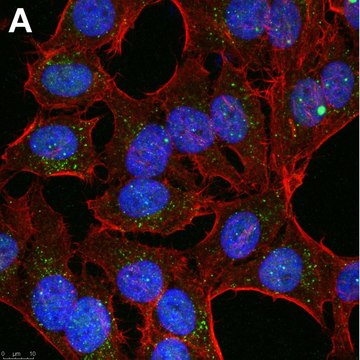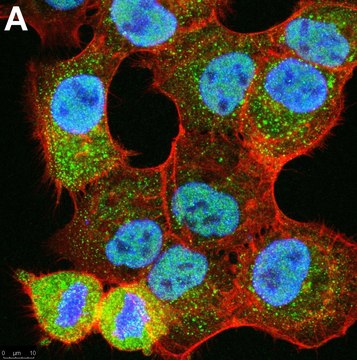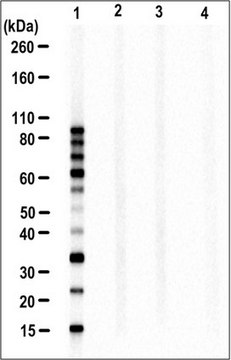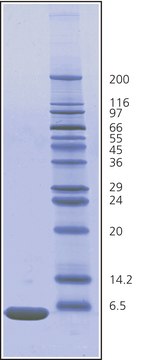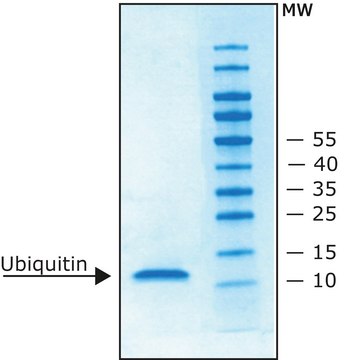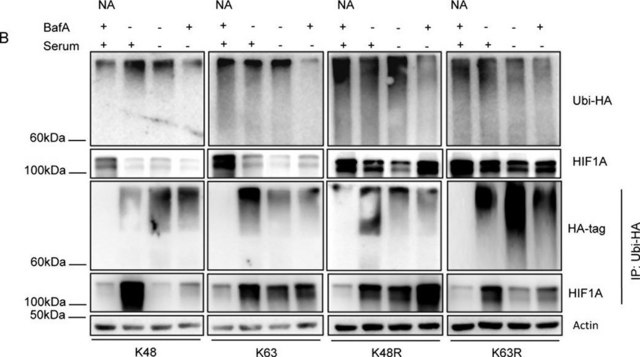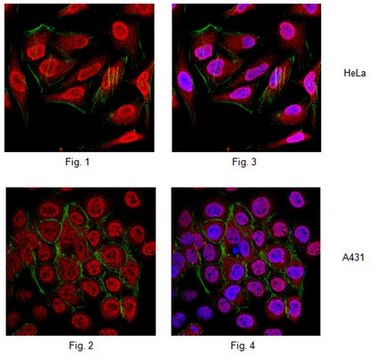Recommended Products
biological source
human
recombinant
expressed in E. coli
form
liquid
mol wt
43 kDa (His Tagged)
packaging
pkg of 100 μg
shipped in
dry ice
storage temp.
−70°C
General description
Ubiquitin is an evolutionary highly conserved 76-residue protein with a molecular weight of 8.6kDa. Linear ubiquitination is a post-translational protein modification essential in innate and adaptive immune signaling. C-terminal of the ubiquitin molecule attaches itself to the ε-amino group of lysine side chains on target proteins, through the actions of activating and conjugating enzymes. Major ubiquitin modification involves the linking of a lysine side chain on the proximal ubiquitin and the C-terminal of the neighboring distal ubiquitin to form lengthened chains of ubiquitin molecule. Linear ubiquitin chains are formed by LUBAC (linear ubiquitin chain assembly complex) which contains HOIP (HOIL-1L interacting protein), HOIL-1L (heme-oxidized IRP2 ubiquitin ligase 1), and SHARPIN [SH3 and multiple ankyrin repeat domains protein (SHANK)-associated RBCK1 homology (RH) domain interactor].
Recombinant linear chains of defined length are expressed in Escherichia coli and purified to homogeneity. Amide linkages join the N- and C-terminus of each ubiquitin molecule to each other. This molecule is HIS-tagged at the N-terminus of the most distal ubiquitin.
Recombinant linear chains of defined length are expressed in Escherichia coli and purified to homogeneity. Amide linkages join the N- and C-terminus of each ubiquitin molecule to each other. This molecule is HIS-tagged at the N-terminus of the most distal ubiquitin.
Biochem/physiol Actions
Ubiquitin is essential in post-translational modifications that regulate a variety of cellular pathways, such as response to viral infections. Ubiquitin molecules link together through lysine residues to form elongated lysine chains, and the ubiquitin lysine residue participating in the formation of these chains is responsible for the complexity linked with ubiquitin modifications. Almost all the seven lysine residues (Lys6, Lys11, Lys27, Lys29, Lys33, Lys48, and Lys63) on ubiquitin are thought to be capable of forming homotypic chains that drive different linkage-dependent cellular pathways. The most common modification is K48-based chain which drives the modified protein to proteasomal degradation. Another well characterized modification is the K63-based chain which is linked with endocytic process-regulation, DNA-damage response, and innate immune response signaling. Linear ubiquitin chains also play a role in NFκB (nuclear factor) signaling activation when stimulated by various signals, where these chains link with NEMO (NF-κB essential modulator).
Physical form
In 20 mM Tris-HCl, pH 7.5, 0.15 M NaCl and 1 mM EDTA.
Preparation Note
Centrifuge the vial prior to opening.
Storage Class Code
13 - Non Combustible Solids
WGK
WGK 3
Flash Point(F)
Not applicable
Flash Point(C)
Not applicable
Regulatory Information
新产品
Choose from one of the most recent versions:
Certificates of Analysis (COA)
Lot/Batch Number
It looks like we've run into a problem, but you can still download Certificates of Analysis from our Documents section.
If you need assistance, please contact Customer Support.
Already Own This Product?
Find documentation for the products that you have recently purchased in the Document Library.
Linear ubiquitination in immunity.
Shimizu Y et al
Immunological Reviews, 266(1), 190-207 (2015)
Structural Basis for the Ubiquitin-Linkage Specificity and deISGylating activity of SARS-CoV papain-like protease.
Ratia K et al
PLoS Pathogens, 10(5), e1004113-e1004113 (2014)
Gliotoxin suppresses NF-?B activation by selectively inhibiting linear ubiquitin chain assembly complex (LUBAC).
Sakamoto H et al
ACS Chemical Biology, 10(3), 675-681 (2015)
Identification of the major ubiquitin-binding domain of the Pseudomonas aeruginosa ExoU A2 phospholipase.
Anderson DM et al
The Journal of Biological Chemistry, 288(37), 26741-26752 (2013)
Our team of scientists has experience in all areas of research including Life Science, Material Science, Chemical Synthesis, Chromatography, Analytical and many others.
Contact Technical Service